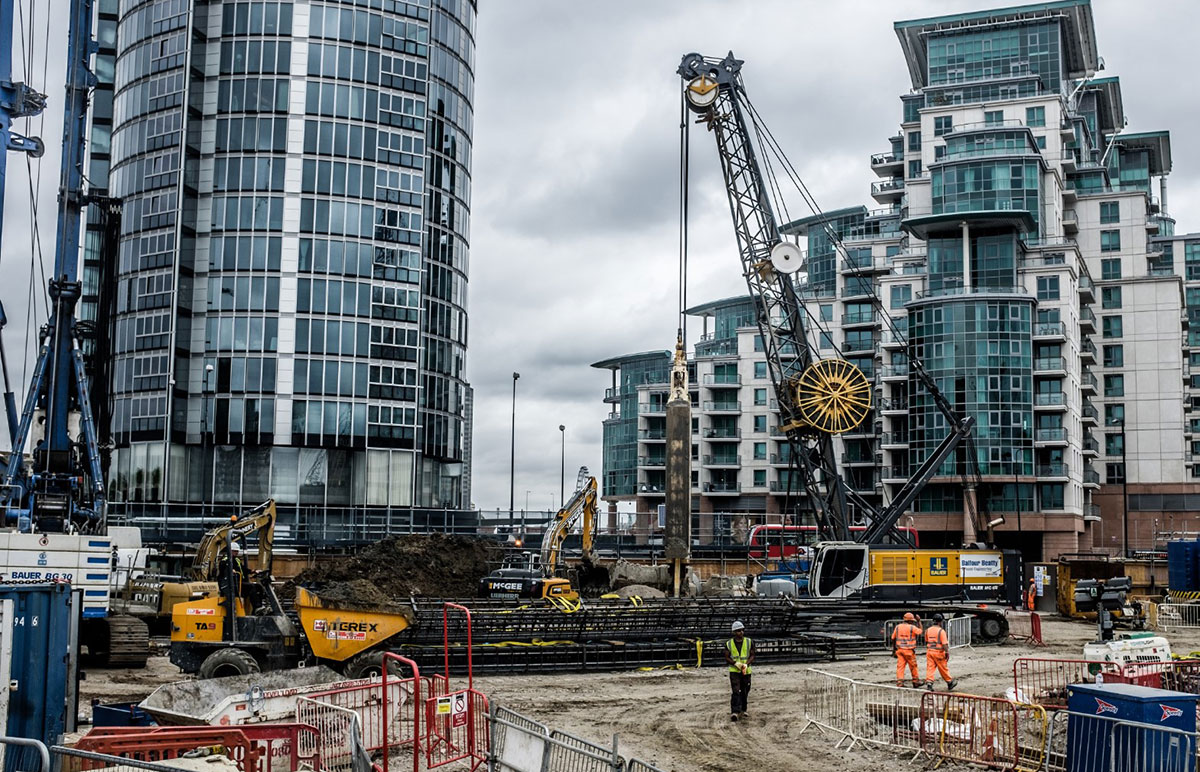The Definitive Guide for Geotheta
The Definitive Guide for Geotheta
Blog Article
8 Easy Facts About Geotheta Shown
Table of Contents6 Easy Facts About Geotheta DescribedNot known Details About Geotheta The Facts About Geotheta UncoveredSee This Report on GeothetaTop Guidelines Of Geotheta

They conduct website investigations, collect samples, perform lab examinations, and evaluate information to examine the suitability of the ground for building and construction projects - Engineer of Record. Based on their findings, geotechnical engineers offer referrals for foundation style, slope stability, keeping structures, and mitigation of geotechnical risks. They collaborate with other specialists, such as designers, structural engineers, and building teams, to make sure that geotechnical considerations are integrated into the general project style and execution
By assessing the behavior and residential or commercial properties of dirt and rock, they can recognize potential geotechnical hazards such as landslides, soil negotiation, or slope instability. Their know-how assists avoid failings or crashes that can jeopardize lives and residential property. Below are some thorough obligations and duties of a geotechnical designer: Website Examination: Geotechnical designers conduct website investigations to gather data on subsurface conditions.
They interpret the data to comprehend the residential properties and habits of the soil and rock, including their strength, leaks in the structure, compaction attributes, and groundwater problems. Geotechnical Analysis and Design: Geotechnical engineers evaluate the data accumulated during website investigations to analyze the stability and viability of the site for construction jobs. They do geotechnical calculations and modeling to examine elements such as bearing capability, negotiation, incline security, side earth stress, and groundwater circulation.
Geotheta for Dummies
Structure Layout: Geotechnical engineers play a vital duty in developing structures that can safely sustain the intended structure. They evaluate the soil conditions and load requirements to identify the ideal foundation type, such as shallow foundations (e.g., grounds), deep structures (e.g (https://justpaste.it/ec966)., piles), or specialized strategies like dirt improvement. They take into consideration aspects such as negotiation restrictions, birthing capability, and soil-structure interaction to develop ideal structure layouts
They review construction plans, screen site activities, and perform area evaluations to verify that the design recommendations are complied with. If unforeseen geotechnical issues occur, they evaluate the situation and give suggestions for removal or adjustments to the layout. Risk Evaluation and Reduction: Geotechnical designers assess geotechnical dangers and threats related to the job website, such as landslides, liquefaction, or dirt disintegration.

Partnership and Communication: Geotechnical designers work closely with other experts included in a job, such as designers, architectural engineers, and building and construction groups. Effective communication and collaboration are important to integrate geotechnical considerations right into the general task design and construction process. Geotechnical engineers provide technological competence, solution questions, and guarantee that geotechnical requirements are met.
Unknown Facts About Geotheta
Here are some sorts of geotechnical engineers: Structure Engineer: Foundation engineers concentrate on making and analyzing foundations for structures. They analyze the soil conditions, tons demands, and website attributes to determine one of the most proper foundation type and style, such as superficial structures, deep foundations, or specialized strategies like stack structures.
They assess the aspects affecting slope security, such as dirt residential properties, groundwater conditions, and incline geometry, and develop strategies to stop incline failures and alleviate risks. Earthquake Designer: Earthquake engineers focus on analyzing and developing structures to endure seismic pressures. They assess the seismic danger of a look here site, review dirt liquefaction possibility, and establish seismic style criteria to guarantee the security and strength of frameworks throughout earthquakes.
They do field testing, collect samples, and evaluate the collected data to define the soil buildings, geologic developments, and groundwater problems at a website. Geotechnical Instrumentation Engineer: Geotechnical instrumentation engineers concentrate on tracking and gauging the behavior of soil, rock, and frameworks. They mount and keep instrumentation systems that keep an eye on factors such as dirt settlement, groundwater levels, incline motions, and architectural variations to assess efficiency and provide very early cautions of prospective issues.
Some Known Details About Geotheta
They perform examinations such as triaxial tests, loan consolidation tests, straight shear tests, and leaks in the structure tests to collect data for geotechnical evaluation and layout. Geosynthetics Designer: Geosynthetics designers concentrate on the style and application of geosynthetic products, such as geotextiles, geogrids, and geomembranes. They utilize these products to improve soil stability, enhance inclines, provide drain options, and control disintegration.
They often tend to be investigative people, which indicates they're intellectual, introspective, and investigative. They are interested, methodical, rational, logical, and sensible. Some of them are also social, implying they're kind, charitable, cooperative, patient, caring, helpful, empathetic, tactful, and pleasant - Geotechnical Engineers.
In the workplace setting, geotechnical designers utilize specialized software tools to do calculations, produce styles, and evaluate data. They prepare records, review job requirements, communicate with customers and team members, and coordinate job activities. The workplace setting offers a conducive atmosphere for research, analysis, and collaboration with other specialists included in the task.
9 Easy Facts About Geotheta Shown
They frequently go to task sites to perform website investigations, assess geotechnical problems, and collect data for analysis. These sees involve traveling to different places, sometimes in remote or tough surfaces. Geotechnical designers may do soil sampling, conduct examinations, and monitor building activities to make sure that the geotechnical facets of the task are being executed properly.
Geotechnical designers additionally work in specialized geotechnical labs. In these centers, they perform experiments, execute tests on dirt and rock examples, and examine the engineering homes of the materials. Geotechnical research laboratory engineers function thoroughly in these settings, taking care of screening devices, running instruments, and tape-recording data. They work together with various other research laboratory staff to make sure accurate and trusted testing outcomes.
Report this page